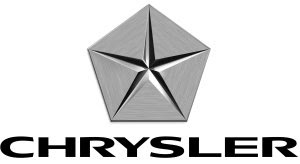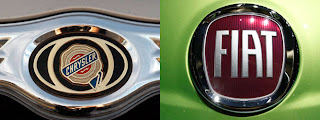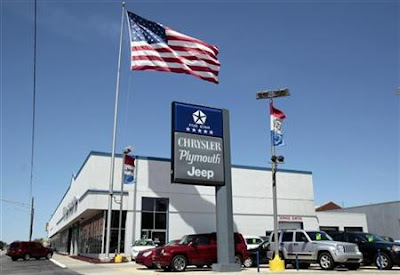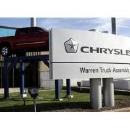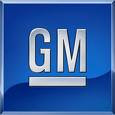
DETROIT/WASHINGTON, June 1 (Reuters) - General Motors Corp
(GM.N) will file for bankruptcy later on Monday, U.S. officials
said, forcing the 100-year-old automaker once seen as a symbol
of American economic might and dynamism into a new and
uncertain era of government ownership. The planned filing, confirmed by Obama administration
officials, would be the third-largest in U.S. history and the
largest-ever U.S. manufacturing bankruptcy. The decision to push GM into a fast-track bankruptcy, and
provide $30 billion of additional taxpayer funds to restructure
the automaker is a huge gamble for the Obama presidency. But in a sign of progress in the government's high-stakes
effort, a bankruptcy judge approved the sale of substantially
all of U.S. automaker Chrysler's assets to a group led by
Italy's Fiat SpA(FIA.MI) in an opinion filed late on Sunday. Chrysler's bankruptcy, also financed by the U.S. Treasury,
has been widely seen as a test run for the much bigger and more
complex reorganization of GM. The GM plan as detailed by U.S. officials is for a quick
sale process that would allow a much smaller GM to emerge from
court protection in as little as 60 to 90 days. "Now the hard part begins, which is making GM and Chrysler
competitive. If they don't do that, then we'll be doing this
all over again in a few years," said Christopher Richter, auto
analyst at CLSA Asia-Pacific Markets in Tokyo. "The immediate implication is that the companies are going
to get smaller and so market share is up for grabs, which means
that rivals like Toyota (7203.T), Honda (7267.T), Nissan
(7201.T) and Hyundai (005380.KS) are going to gain share." LIFELINE Since the start of the year, GM has been kept alive with
U.S. government funding as a White House-appointed task force
vetted plans for a sweeping reorganization that will be
undertaken with $50 billion in government financing. By preparing to take a 60 percent stake in a reorganized
GM, the Obama administration is gambling that the automaker can
compete with the likes of Toyota Motor Corp after its debt is
cut by half and its labor costs are slashed under a new
contract with the United Auto Workers union. The governments of Canada and the province of Ontario
agreed to provide another $9.5 billion to GM in a late addition
to the plans for the bankruptcy that have been taking shape for
weeks, U.S. officials said. [ID:nN31418487] GM plans to close 11 U.S. facilities and idle another three
plants. It has not provided an updated target for job cuts but
had been looking to cut 21,000 factory jobs from the 54,000 UAW
workers it now employs in the United States. The UAW would have a 17.5 percent stake in the "new GM."
The Canadian government would own 12 percent stake and GM
bondholders would get 10 percent. RELUCTANT INVESTOR Officials involved in the planning for GM said the White
House was a "reluctant investor" in GM but had to prevent a
liquidation that analysts say would have cost tens of thousands
of jobs at a time when the economy is mired in recession. GM alone employs 92,000 in the United States and is
indirectly responsible for 500,000 retirees. "We want a quick, clean exit as soon as conditions permit,"
Treasury Secretary Timothy Geithner told students at Peking
University in Beijing. "We're very optimistic these firms will
emerge without further government assistance." Analysts said that while there were large risks to the
Obama administration's approach, it had at least succeeded in
pulling GM back from the brink of collapse. [ID:nN31400726] "I think they have a much greater chance of emerging as a
healthy company now than they did just six months ago," said
Aaron Bragman, an analyst at IHS Global Insight. "Nobody gave
them any possibility of emerging as a whole company." President Barack Obama is due to speak on the auto industry
shortly before noon Eastern time on Monday. A news conference
by GM Chief Executive Fritz Henderson will follow. U.S. officials said there was no plan to provide any
further funding for GM and insisted that all of the Detroit
Three could survive. Ford Motor Co (F.N) has not sought
emergency federal aid. "We do believe, and completely endemic in the president's
decision, was a belief that this country can support three
domestic successful viable auto companies," a senior Obama
administration official said. In the case of GM, the goal of restructuring is to allow it
to return to profitability if U.S. industry-wide auto sales
recover even slightly to near 10 million on an annual basis. Until now, GM had counted on a recovery to the
16-million-unit mark the industry last saw in 2007 in order to
stop losing money, officials said. Even if GM and Chrysler emerge swiftly from bankruptcy this
summer, the autos task force will stay in business -- shifting
to an investment management role. Senior administration officials said on Sunday there was
plenty to keep the task force staff busy, monitoring the
government's stake of about 60 percent of GM, and less than a
10 percent stake in Chrysler. [ID:nN31418995] The task force is led by Wall Street investment banker
Steven Rattner and labor negotiator Ron Bloom, and includes top
White House adviser Lawrence Summers and U.S. Treasury
Secretary Timothy Geithner. CAREFULLY ORCHESTRATED FAILURE GM's bankruptcy is the most carefully orchestrated Chapter
11 filing in the history of American business. The automaker's final descent started with President George
W. Bush administration's emergency aid announcement on Dec. 19
and accelerated in late March when the new Obama government
gave it 60 days to restructure. While the "new GM" is expected to emerge quickly from court
protection, its shuttered plants, stranded equipment and other
spurned assets would be left to liquidation in bankruptcy. Al Koch, a managing director at advisory firm AlixPartners
LLP, will be appointed chief restructuring officer in charge of
liquidating those GM assets. [ID:nN31395352] A veteran restructuring adviser, Koch has had prominent
roles in Kmart Corp's restructuring and other turnarounds. Over the weekend, GM won support from investors
representing 54 percent of its $27 billion in bondholder debt
offered their support for the U.S. government's plans.
[ID:nN31329833] Bondholders could take up to 25 percent of GM if it
recovers to be worth what it was in 2004. The bondholders' support does not ensure court approval but
gives the company an important symbolic victory that bankruptcy
experts and analysts say will help GM's case. In the past week, GM has also concluded an amended
agreement with the United Auto Workers union under which the
UAW will receive a 17.5 percent in a restructured company and
other debt and preferred stock instead of $20 billion in cash. Founded in 1908, GM rose to dominate the U.S. and global
auto industries under the stewardship of pioneering chief
executive Alfred Sloan, who famously pledged that the automaker
would deliver "a car for every purse and purpose." By the mid-1950s, at the peak of its success, GM had some
514,000 employees. It accounted for about half of U.S. car
production and its sales were twice as large as the No. 2
corporation, Standard Oil. GM's stock fell to 75 cents on Friday, a level last seen
during the Great Depression on what was expected to be its last
trading day before bankruptcy.
(Additional reporting by David Bailey, Soyoung Kim, David
Lawder, John Crawley, Walden Siew and Tom Hals; Editing by
Patrick Fitzgibbons and Ted Kerr)



